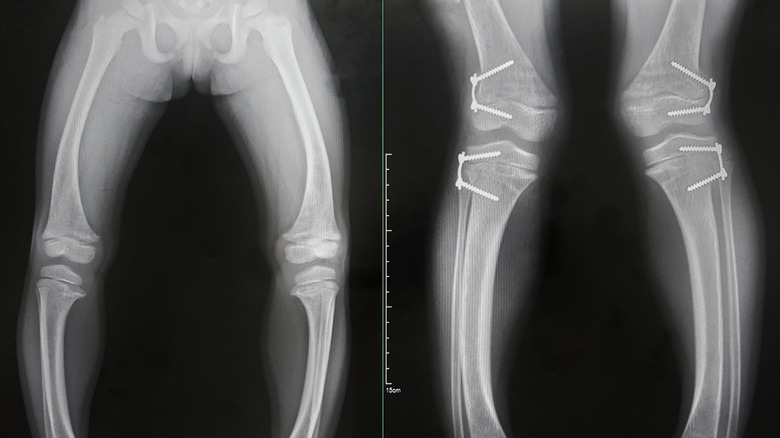What Is Rickets?
Advancements in medicine have resulted in certain diseases going into decline. Comparatively few people today know the pain of measles, a once-deadly and all too common disease (via CDC). Vaccinations have all but eliminated the disease, though cases are on the rise in areas where vaccination rates are low, according to the CDC.
Measles is not the only condition nearly wiped out by vaccines and public health programs, however. Outbreaks of mumps, rubella, and chickenpox are largely unheard of today, thanks to widespread immunization by vaccines, per the CDC. And a disease once so common that its widespread outbreaks in the 17th century earned it the name "the English Disease" is now so rare that most people may not know what it is (via Acta Reumatologica Portuguesa). That disease is better known as rickets, a condition battled not by vaccine but by diet.
It's a nutrient deficiency
The Mayo Clinic defines rickets as the "softening and weakening of bones in children." Rare genetic issues cause a small percentage of rickets cases. By and large, however, the condition develops due to a dietary deficiency of vitamin D.
Vitamin D may is essential to bone health. While it is important to include this vitamin at every age in life, per the National Institute of Health, it is particularly important for children to get vitamin D in their diet and exposure to sunlight, per Mayo Clinic. Vitamin D is required for the absorption of nutrients, calcium among them, so the lack of vitamin D can directly affect bone health and the possibility of rickets. If children do not get enough vitamin D, their bones may not harden and may grow correctly. Bowed legs or "knocked knees", a protruding breastbone, and thick wrists or ankles can all develop as a result of rickets (via Mayo Clinic).
Rickets is a rare condition today. If a child exhibits symptoms such as delayed growth or motor skills, muscle weakness, pelvic pain, leg pain, or discomfort in the spine, it may be time to seek medical help and test the child's vitamin D levels (via Mayo Clinic).


